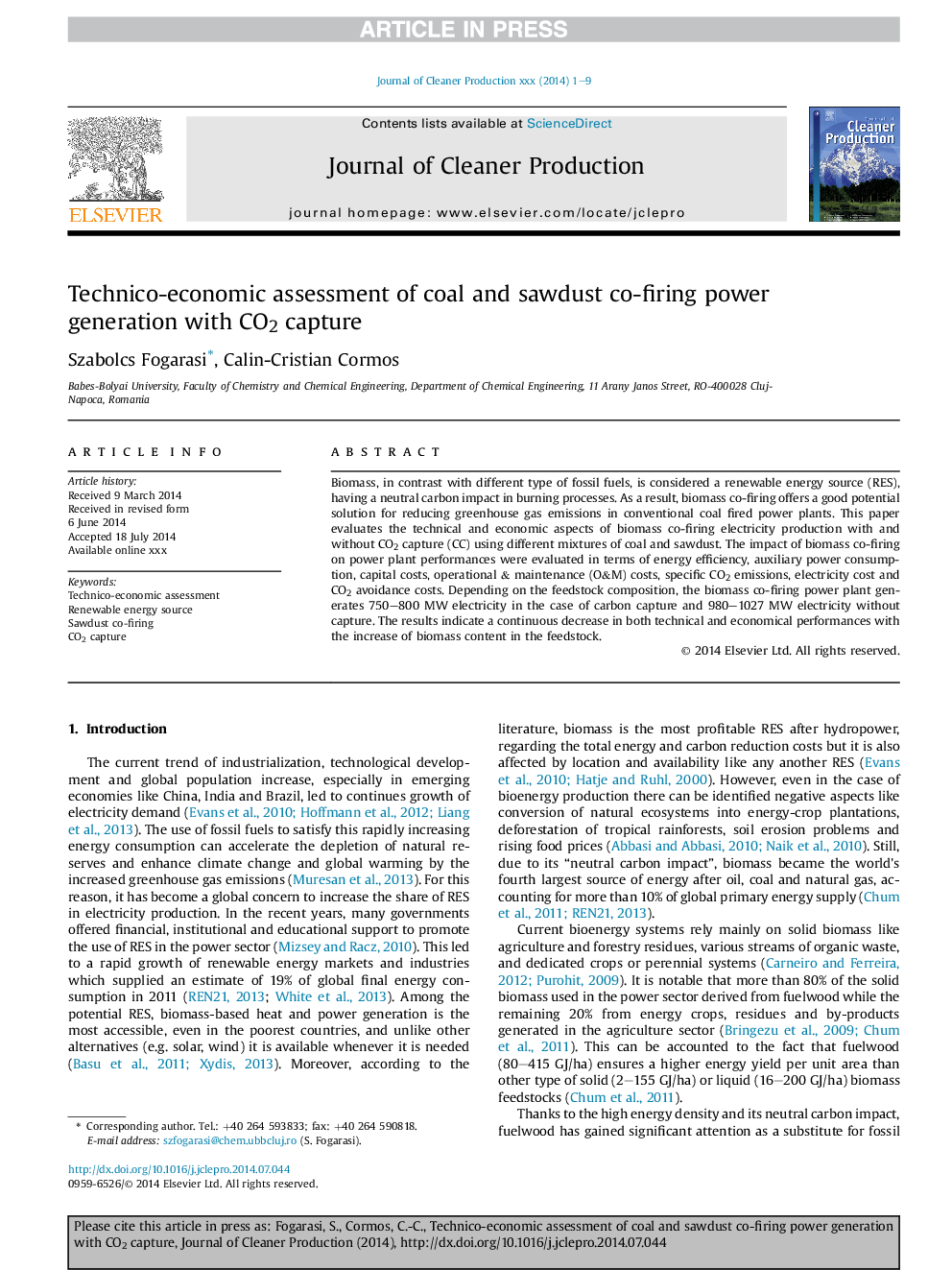| Article ID | Journal | Published Year | Pages | File Type |
|---|---|---|---|---|
| 8103505 | Journal of Cleaner Production | 2015 | 9 Pages |
Abstract
Biomass, in contrast with different type of fossil fuels, is considered a renewable energy source (RES), having a neutral carbon impact in burning processes. As a result, biomass co-firing offers a good potential solution for reducing greenhouse gas emissions in conventional coal fired power plants. This paper evaluates the technical and economic aspects of biomass co-firing electricity production with and without CO2 capture (CC) using different mixtures of coal and sawdust. The impact of biomass co-firing on power plant performances were evaluated in terms of energy efficiency, auxiliary power consumption, capital costs, operational & maintenance (O&M) costs, specific CO2 emissions, electricity cost and CO2 avoidance costs. Depending on the feedstock composition, the biomass co-firing power plant generates 750-800Â MW electricity in the case of carbon capture and 980-1027Â MW electricity without capture. The results indicate a continuous decrease in both technical and economical performances with the increase of biomass content in the feedstock.
Keywords
Related Topics
Physical Sciences and Engineering
Energy
Renewable Energy, Sustainability and the Environment
Authors
Szabolcs Fogarasi, Calin-Cristian Cormos,
